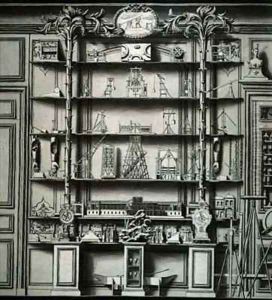Jean Baptiste, the Younger Courtonne Paintings
Jean Baptiste, the Younger Courtonne was a French sculptor who belonged to the Rococo period, known for its elaborate ornamentation, intricate detailing, and elegant forms. Born in 1718, he was the son of Jean Baptiste Courtonne the Elder, also a sculptor, which suggests that he likely received his initial training in his father's workshop, a common practice at the time.
Courtonne's work was characterized by its finesse and the grace of its figures. He became a part of the vibrant artistic scene in Paris, which was then the cultural hub of Europe. During this period, the Rococo style was at its peak, especially in decorative arts and architecture. Courtonne, however, is not as widely recognized as some of his contemporaries like François Boucher or Jean-Honoré Fragonard, possibly due to the more ephemeral nature of his contributions or less documentation of his works.
Despite the lack of extensive records on Courtonne’s life and oeuvre, it is known that he became a member of the prestigious Académie Royale de Peinture et de Sculpture. This institution was the cornerstone of the French artistic establishment and dictated the aesthetic standards of the time. Membership in the Académie was a significant honor and afforded artists greater opportunities for commissions and recognition.
Courtonne's career unfolded during a time of transition in French art, as the Rococo began to give way to the Neoclassical style by the late 18th century. This shift was spurred by a renewed interest in the classical art of ancient Greece and Rome, which was seen as a moral and aesthetic corrective to the perceived excesses of the Rococo. Although Courtonne's work was rooted in the Rococo, like many artists of his generation, he may have experienced the changing tastes of his patrons and the evolving artistic landscape.
Jean Baptiste, the Younger Courtonne died in 1781. The exact impact and full scope of his work may be difficult to ascertain, but his career reflects the rich artistic milieu of 18th-century France and the legacy of the Rococo movement. His contributions would have been a part of the decorative fabric of the period, likely gracing the interiors of private residences and possibly public buildings with his sculptures.
